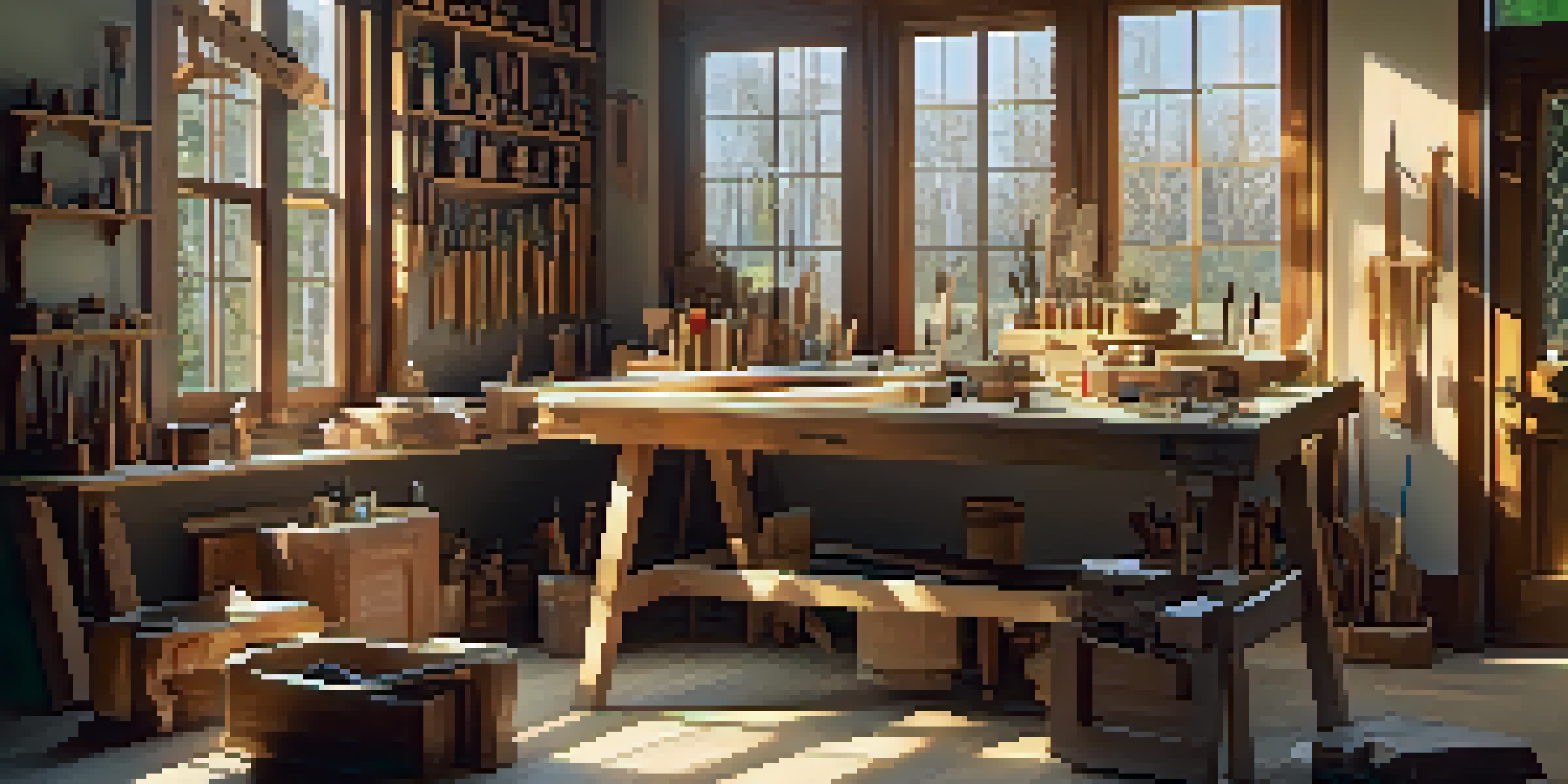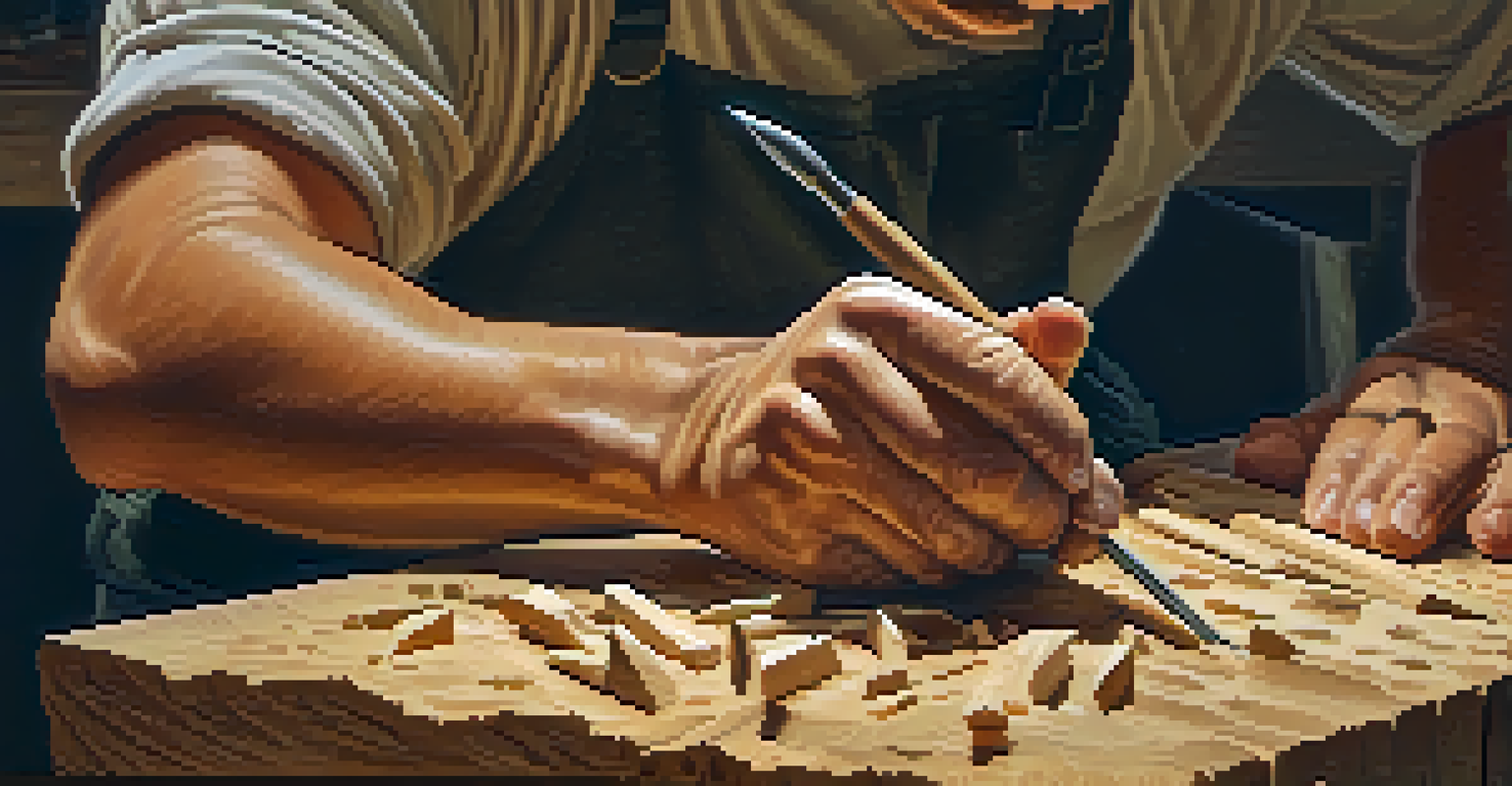Common Mistakes in Wood Carving and How to Avoid Them

Neglecting to Plan Your Design Can Lead to Mistakes
One of the most common pitfalls in wood carving is diving into a project without a clear plan. Just like a ship needs a map to navigate, your carving requires a design blueprint to guide you. Planning allows you to visualize the final product and identify potential challenges early on.
A plan is the first step in turning the invisible into the visible.
When you skip this crucial step, you may find yourself making adjustments on the fly, leading to inconsistencies and errors. For example, if you don’t measure correctly, you might end up with a piece that’s too small or misshapen. Taking the time to sketch your design can save you headaches later.
So, grab a pencil and paper before you pick up your tools. A well-thought-out plan not only enhances your creativity but also helps you carve with confidence.
Using Dull Tools Can Ruin Your Carving Experience
Imagine trying to cut a cake with a butter knife—frustrating, right? The same goes for wood carving; using dull tools can lead to poor results and increased risk of injury. Sharp tools are essential for achieving clean, precise cuts and for making your carving experience enjoyable.

When tools are dull, you may find yourself applying excessive force, which can lead to slips and accidents. Plus, working with a dull chisel means you’re more likely to create splinters or uneven surfaces, which can compromise your design. Regularly sharpening your tools is a simple yet effective way to enhance your carving skills.
Plan Your Design to Avoid Mistakes
Creating a clear design blueprint before starting your wood carving helps visualize the final product and prevent errors.
Invest in a good sharpening kit, and make it a habit to maintain your tools. This small effort goes a long way in ensuring smoother, more enjoyable carving sessions.
Ignoring Safety Precautions Can Lead to Serious Injuries
Safety should always be your top priority when wood carving. It may seem like an obvious point, but many newcomers overlook it in their excitement to create. Just like wearing a seatbelt in a car, using protective gear while carving can prevent injuries that could sideline your projects.
The difference between a successful person and others is not a lack of strength, not a lack of knowledge, but rather a lack in will.
Always wear safety glasses to protect your eyes from flying debris, and consider using gloves designed for grip without compromising dexterity. Taking a few moments to set up a safe working environment, free from distractions, can significantly reduce your risk of accidents.
Remember, a few precautionary measures can make a world of difference. Prioritize safety, and you’ll enjoy a longer, more productive carving journey.
Rushing the Process Often Leads to Disappointment
In our fast-paced world, it’s easy to fall into the trap of wanting to complete a project quickly. However, rushing through wood carving can lead to mistakes that are difficult to fix. Carving is an art that requires patience, much like nurturing a plant to grow—hasty actions can stifle the beauty of your work.
When you take your time, you not only enhance your skills but also allow for deeper connection and enjoyment in the process. Slow and steady allows you to focus on the details, ensuring that each cut is intentional and aligns with your vision. It’s about the journey as much as the destination.
Use Sharp Tools for Safety and Quality
Maintaining sharp tools is essential for achieving clean cuts and ensuring a safer, more enjoyable carving experience.
So, give yourself permission to slow down. Embrace the process and watch your skills flourish.
Choosing the Wrong Wood Can Affect Your Project
Not all wood is created equal when it comes to carving. Choosing the wrong type can lead to frustration and unsatisfactory results. Just as a chef selects the best ingredients for a dish, a carver must pick the right wood to work with to achieve their desired outcome.
Softwoods like pine are easier to carve and great for beginners, while hardwoods like oak provide more durability but require more skill. If you’re unsure, starting with a medium-density wood can strike a balance between ease and challenge. Understanding wood characteristics can greatly influence your carving experience.
Before you start carving, do your research on different types of wood. This knowledge can save you time and effort and help you create a project you’ll be proud of.
Neglecting to Finish Your Work Can Dull Its Beauty
Completing your carving is just the beginning; the finishing touches are what truly bring your piece to life. Many carvers overlook this essential step, thinking that their work is done once the carving is complete. However, a good finish enhances the natural beauty of the wood and protects it for years to come.
Applying oil, varnish, or wax can bring out the grain and color of the wood while providing a protective layer against wear and tear. Think of it like applying the final coat of paint to a masterpiece; it elevates the entire project. Neglecting this step can leave your hard work looking unfinished and vulnerable.
Practice Regularly for Skill Growth
Consistent practice is crucial for honing your wood carving skills, allowing you to improve and gain confidence over time.
Take the time to choose the right finish for your piece. The final touches are where your craftsmanship truly shines.
Failing to Practice Regularly Can Stunt Your Growth
Like any skill, wood carving requires practice to improve. Many beginners make the mistake of thinking they can master the craft in just a few sessions. However, honing your skills is more akin to training for a marathon—consistent effort over time yields the best results.
Set aside regular time to carve, even if it’s just for a short session. Experimenting with different techniques and styles will build your confidence and expertise. Remember, every piece you create is an opportunity to learn, and even the mistakes can teach valuable lessons.

So, embrace the journey of practice. The more you carve, the more proficient and comfortable you’ll become.